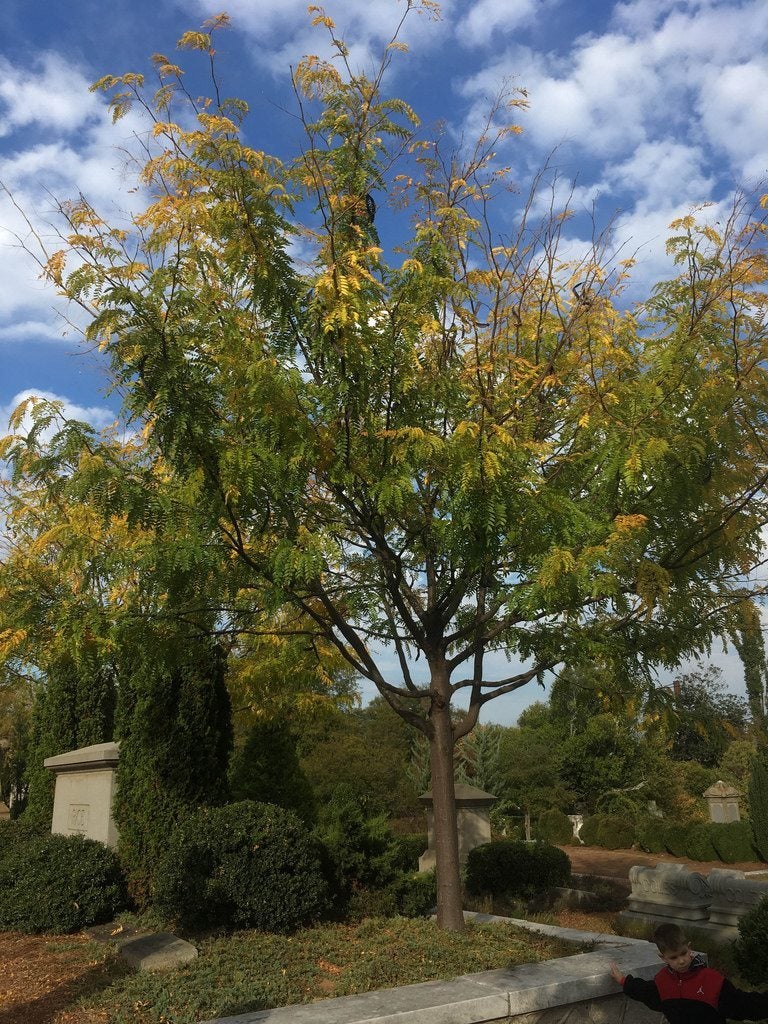Skyline Honey Locust Care: Learn How To Grow A Skyline Locust Tree

The honey locust ‘Skyline’ (Gleditsia triacanthos var. inermis ‘Skyline’) is native to Pennsylvania into Iowa and south to Georgia and Texas. The form inermis is Latin for ‘unarmed,’ in reference to the fact that this tree, unlike other honey locust varieties, is thornless. These thornless honey locusts are great additions to the landscape as a shade tree. Interested in growing Skyline honey locusts? Read on to find out how to grow a Skyline locust tree.
What is a Skyline Thornless Honey Locust?
Honey locust ‘Skyline’ can be grown in USDA zones 3 through 9. They are rapidly growing shade trees lacking the up to a foot long (31 cm.) thorns and, in most cases, the large seed pods that adorn other honey locust trees. They are rapidly growing trees that can grow up to 24 inches (61 cm.) per year and attain a height and spread of about 30 to 70 feet (9-21 m.). The tree features a rounded canopy and pinnate to bi-pinnate dark green leaves that turn an attractive yellow in the fall. Although the lack of thorns is a boon to the gardener, an interesting side note is that the thorned varieties were once called Confederate pin trees since the thorns were used to pin Civil War uniforms together.
How to Grow a Skyline Locust
Skyline locusts prefer rich, moist, well-draining soil in full sun, which is at least six full hours of direct sun. They are tolerant of not only a wide array of soil types, but also of wind, heat, drought, and salinity. Due to this adaptability, Skyline locusts are often selected for median strip planting, highway plantings, and sidewalk cutouts. There is little to no need for special Skyline honey locust care. The tree is so adaptable and tolerant and easy to grow once established that it basically maintains itself. In fact, areas suffering from urban air pollution, poor drainage, compact soil, and/or drought are actually perfect areas for growing Skyline honey locusts within USDA zones 3 through 9.
Sign up for the Gardening Know How newsletter today and receive a free copy of our e-book "How to Grow Delicious Tomatoes".

Amy Grant has been gardening for 30 years and writing for 15. A professional chef and caterer, Amy's area of expertise is culinary gardening.
